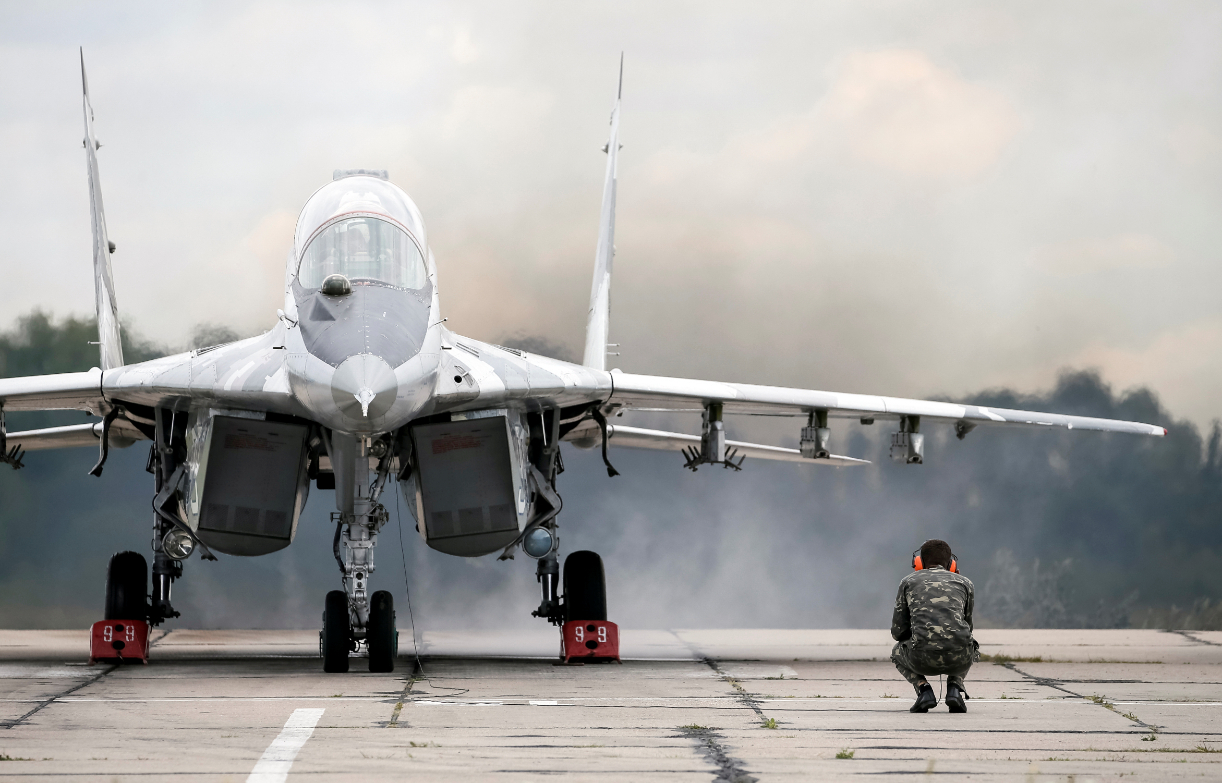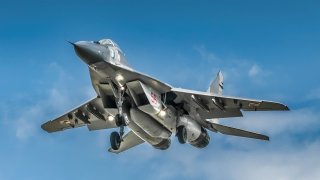The U.S. Military Bought 21 Russian-Made MiG-29 Fulcrum Fighters
In the 1990s, the U.S. acquired 21 Russian MiG-29 fighters from Moldova to prevent them from reaching Iran and to glean intelligence.
Summary and Key Points: In the 1990s, the U.S. acquired 21 Russian MiG-29 fighters from Moldova to prevent them from reaching Iran and to glean intelligence.

-The MiG-29, a fourth-generation Soviet aircraft, is known for its agility and versatile weaponry. This acquisition provided the U.S. Air Force with critical insights into Soviet aviation technology, enhancing its strategies and training.
-Although no longer used for training, these aircraft are now displayed in museums, with the knowledge gained continuing to influence U.S. military strategy.
How the U.S. Acquired Russian MiG-29s and Gained a Strategic Edge
In the 1990s, the United States purchased 21 Russian-made MiG-29 fighters from the newly independent country of Moldova. The MiG-29 was a fourth-generation Soviet era warplane that was one of the most advanced designs in the world. The Americans had little understanding of these warplanes and looked at the purchase as a wonderful opportunity to glean useful intelligence on a system that could be used against American pilots.
The Mikoyan MiG-29, also known as the Fulcrum, is a twin-engine fighter aircraft designed by the old Soviet Union. It was first built in the 1970s as a response to new American fourth-generation warplanes, such as the McDonnell Douglas F-15 Eagle and the General Dynamics F-16 Fighting Falcon. The first prototype of the MiG-29 flew in 1977, with the bird entering service with the Soviet Air Force in 1982.
The Specs
The MiG-29 is a highly capable craft with a host of operational mission sets. The MiG-29 is highly maneuverable, with excellent acceleration and agility. This warbird is equipped with a pulse-doppler radar and can carry a variety of air-to-air and air-to-surface missiles, as well as unguided rockets and bombs.
Russia’s MiG-29 can carry nukes, too.
A MiG-29 is powered by two Klimov RD-33 turbofan engines, each producing approximately 8,300 kgf of thrust. These engines give the aircraft a maximum speed of Mach 2.25 with a service ceiling of 18,000 meters.
The MiG-29 has been widely exported and is operated by many countries around the world. It is currently in service with the air forces of Russia, Ukraine, India, and several other countries.
In multiple conflicts, one will find the MiG-29 operating. Such conflicts that this warplane partook in include the Gulf War, the War in Afghanistan, and the 2008 South Ossetia War. Today, these systems are in use in the Ukraine War. As for foreign militaries using the MiG-29, back when it was first available for purchase, the Iran threat was understandably played up.
Iran Wanted These Birds
Iran was interested in acquiring the MiG-29s that Russia was contemplating getting rid of.
This acquisition was part of the U.S. government’s efforts to prevent these advanced these advanced fighter jets from falling into the hands of countries that might pose a threat to U.S. interests. Specifically, there were serious concerns that Iran might purchase the jets from Moldova, which could have significantly bolstered Iran’s air force capabilities.
Iran has long been considered by Washington to be a rogue state.

After the fall of the Soviet Union and the economic doldrums that the post-Soviet Russia found itself in following the collapse of the USSR, Washington feared the proliferation of weapons to rogue regimes. Specifically, American leaders fretted over the prospects of the old Soviet arsenal of nuclear, biological, and chemical weapons being proliferated to rogue states. Or even the prospect of nuclear weapons experts, chemists, or other scientists offering their expertise to rogue regimes to build WMD capabilities.
But the concerns quickly moved beyond the WMD realm to the general capability arena. Had the Iranians been able to acquire the MiG-29, their military would have been advanced by 10-15 years from where it was. The Americans, due to their sanctions regime on Iran, had managed to keep the Islamic Republic in relative containment. They’d prevented nuclear materiel from going to Iran. Washington was determined to prevent Iran from enhancing its conventional military capabilities as well.
Lessons Learned from MiG-29
So, the Air Force found itself in possession of 21 Soviet MiG-29s. These platforms allowed for the Air Force to evaluate the most advanced Soviet-designed fighters of the time. The MiG-29, also known as Fulcrum, was designed to counter the widely successful and highly capable American F-16 and F/A-18 fourth-generation warplanes. By studying the MiG-29, the US military could better understand its strengths and weaknesses while developing strategies to counter it in potential conflicts.
The USAF learned a great deal from the MiG-29s it purchased from Moldova. The evaluations provided valuable insights into the capabilities of Soviet-designed fighters, which were largely unknown at the time. America’s lessons learned from operating the MiG-29s were soon worked into future force planning and dogfighting strategies.
America’s military no longer employs the MiG-29s acquired in the 1990s in their current training. After the evaluations were completed, fighters were retired and are now on display at various locations across the United States. The knowledge gained from these evaluations, however, continues to inform US military strategy and aircraft design.
So, for about $25 million apiece, the US military secured what was at the time one of the world’s most advanced warplanes to study and exploit.

It was a great deal that the Americans made and it likely helped to save many lives, as the MiG-29 is still in use today.
Author Experience and Expertise: Brandon J. Weichert
Brandon J. Weichert, a National Interest national security analyst, is a former Congressional staffer and geopolitical analyst who is a contributor at The Washington Times, the Asia Times, and The-Pipeline. He is the author of Winning Space: How America Remains a Superpower, Biohacked: China’s Race to Control Life, and The Shadow War: Iran’s Quest for Supremacy. His next book, A Disaster of Our Own Making: How the West Lost Ukraine, is due October 22 from Encounter Books. Weichert can be followed via Twitter @WeTheBrandon.
All images are Creative Commons or Shutterstock.
From the Vault
Russia Freaked Out: Why the U.S. Navy 'Unretired' the Iowa-Class Battleships
Battleship vs. Battlecruiser: Iowa-Class vs. Russia's Kirov-Class (Who Wins?)


